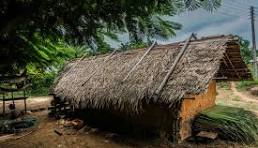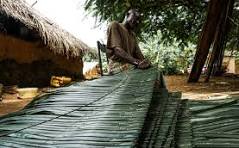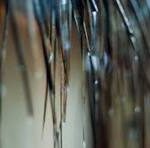How are thatched roofs made? The Intriguing Process Behind their creation

Crafted by layering natural materials such as reed or straw in an overlapping pattern to create a durable and weather-resistant covering, shows the unique way in which thatched roofs are made. Thatched roofs are not merely functional coverings; they are a testament to human creativity and resourcefulness. Picture this: skilled artisans meticulously layer natural materials such as reed and straw, weaving them together in a symphony of craftsmanship that withstands the test of time. But the artistry doesn’t end there.
Each layer serves a purpose, providing not only waterproofing and insulation but also a sense of coziness and warmth that modern roofing materials simply can’t replicate. The process of how thatched roofs are made is as much about preserving tradition as it is about embracing innovation. From the initial assessment of the roof structure to the final shaping and trimming of the thatch, every step is imbued with a sense of reverence for the past and a vision for the future.
Thatched roofs, with their rustic charm and historical allure, have graced architectural landscapes for centuries, embodying both practicality and tradition. Delving into their origins and significance unveils a narrative rich in cultural heritage and timeless craftsmanship.
Understanding Thatched Roofs
Thatching, an age-old roofing technique, involves the layering of natural materials to create a durable and weather-resistant covering. From humble beginnings as a functional necessity to a revered art form, the evolution of thatching reflects humanity’s ingenuity and resourcefulness. Thatched roofs, an ancient roofing method still prevalent in many parts of the world, are crafted with meticulous attention to detail and traditional techniques.
The process begins with selecting the appropriate thatching material, often straw, reed, or grasses, depending on regional availability and climate.
Skilled craftsmen then assemble a wooden framework atop the structure, providing the skeleton for the roof. Bundles of thatching material are carefully layered and secured to this framework, employing methods such as stitching or weaving. Each layer is laid in an overlapping pattern, ensuring a tight seal against water penetration. The final result is a beautifully textured roof that not only provides insulation and protection from the elements but also adds rustic charm to any structure.
Materials Used in making Thatched roofs
Thatching materials vary widely, with natural options such as reed, straw, and water reed being predominant. Each material offers unique properties, from the flexibility of reed to the insulating qualities of straw. In recent years, synthetic alternatives have emerged, providing a modern twist on traditional thatching methods.
Preparation and Planning
Before embarking on a thatching project, meticulous planning is essential. Assessing the roof’s structure ensures compatibility with thatching techniques while calculating materials and considering budgetary constraints lays the groundwork for a successful endeavor.
Harvesting and Preparing Thatch Material
The journey of thatch material begins in the fields, where skilled harvesters select and gather the finest specimens. Once harvested, the material undergoes processing and treatment to enhance its durability and longevity, ensuring it withstands the test of time.
Techniques in making thatched roofs
Thatching is a delicate craft that requires precision and expertise. Layering methods, such as combed wheat or scallops, create a distinctive aesthetic while bundling and tying techniques ensure secure attachment. Specialized tools, including Leggett and spar hooks, facilitate the intricate process of laying the thatch.

Installing the Thatch
With the foundation prepared, the installation of the thatch commences. Beginning with a base layer, each subsequent layer is carefully affixed, with meticulous attention paid to shaping and trimming to achieve a uniform appearance.
Weatherproofing and Insulation
Thatched roofs offer natural protection against the elements, with multiple layers providing superior weather resistance. The insulating properties of thatch ensure a comfortable interior environment year-round, while waterproofing techniques, such as ridge capping and gable ends, further enhance durability.
Maintenance and Repair
Regular maintenance is essential to preserving the integrity of a thatched roof. Simple tasks, such as removing debris and checking for signs of wear, can prevent minor issues from escalating. In the event of damage, prompt repair is imperative to prevent further deterioration.
Environmental Impact
Thatched roofs boast impressive eco-friendly credentials, with minimal carbon footprint compared to modern roofing materials. Beyond their sustainability, thatched roofs offer ecological benefits, providing habitats for wildlife and contributing to biodiversity conservation.
Cultural Significance
Across cultures and continents, thatched roofs hold symbolic significance, embodying tradition, and heritage. From the quaint cottages of rural England to the tropical huts of Southeast Asia, thatched roofs are a testament to human ingenuity and adaptability.
Modern Applications of Thatched Roofs
In contemporary architecture, thatched roofs are experiencing a renaissance, as designers embrace their timeless appeal and sustainable attributes. Whether incorporated into traditional designs or integrated into modern structures, thatched roofs add a touch of rustic elegance to any setting.
Challenges and Limitations
Despite their many virtues, thatched roofs are not without challenges. Fire safety considerations, pest infestation, and long-term durability pose potential obstacles that must be addressed through proper planning and maintenance.
Cost Considerations
While the initial cost of thatched roofs may be higher than conventional materials, the long-term savings and investment value often outweigh the expense. Factors such as material choice, roof size, and location influence the overall cost, making it essential to weigh the pros and cons before committing to a thatching project.
Regulations and Building Codes
Compliance with regulations and building codes is essential when installing a thatched roof. Zoning laws, safety standards, and preservation guidelines vary by region and must be adhered to ensure the structural integrity and legality of the project.
Future of Thatched Roofs
As we look to the future, innovations in thatching techniques and sustainable materials promise to further enhance the appeal and viability of thatched roofs. From advancements in fire-retardant treatments to the integration of renewable resources, the future of thatched roofing is as bright as it is enduring.
Conclusion
Thatched roofs, rooted in centuries of tradition, represent a sustainable and eco-friendly approach to roofing that begins with the careful selection of natural materials. Farmers harvest straw, reeds, or grasses from local fields, ensuring a renewable supply for this time-honored craft.
Skilled thatchers then transform these raw materials into intricate layers of roofing, expertly weaving and securing them onto a sturdy wooden frame. The process requires both artistry and precision, as each bundle is carefully positioned to create a seamless, weather-resistant surface. Beyond its practical function, a thatched roof serves as a testament to the ingenuity of traditional building methods and the enduring beauty of natural materials in architectural design.
In conclusion, thatched roofs represent more than just a method of construction; they are a testament to human creativity, resilience, and ingenuity. As we continue to cherish and preserve this ancient craft, we ensure that the enduring appeal of thatched roofs remains an integral part of our architectural heritage.









